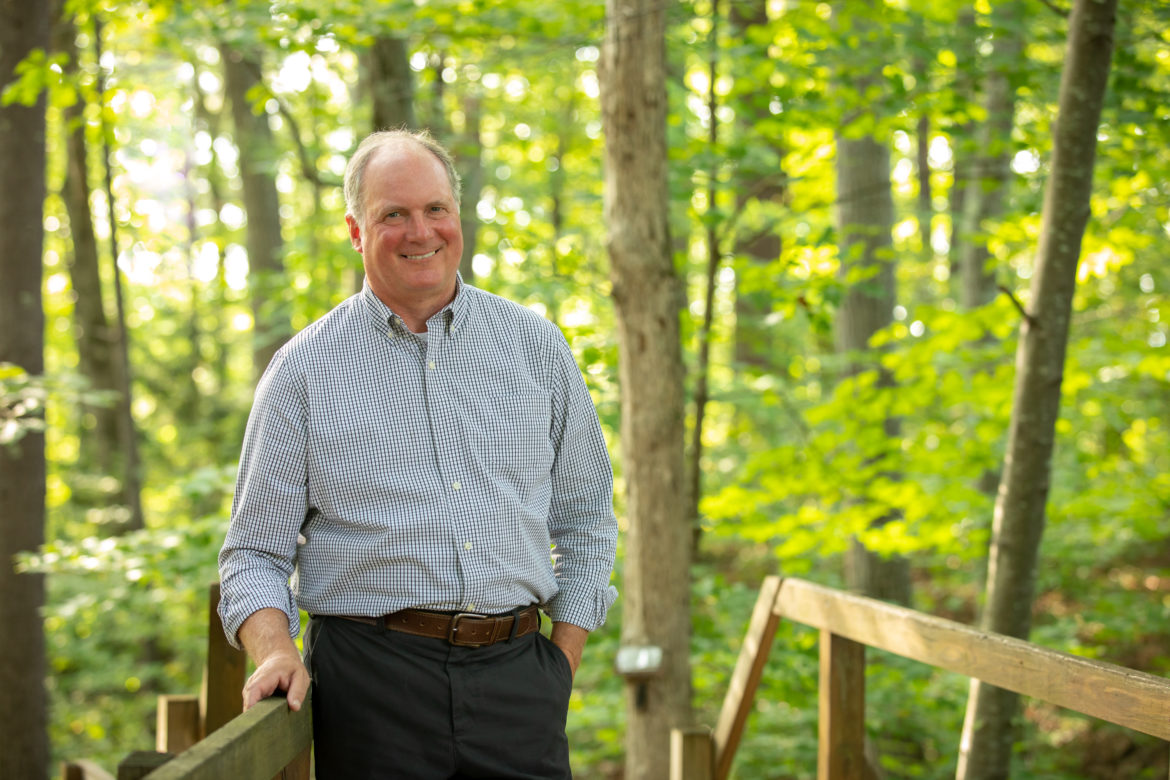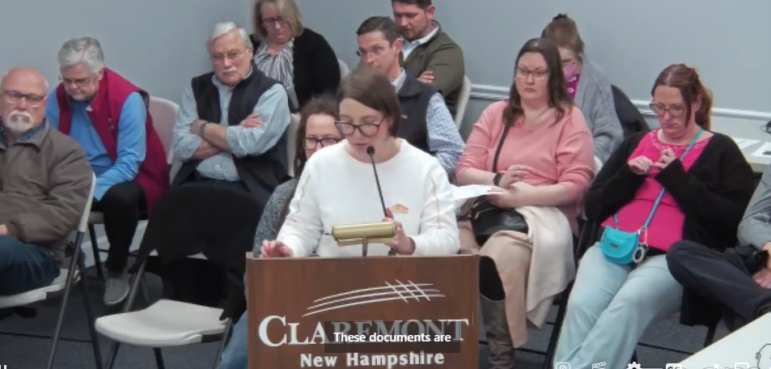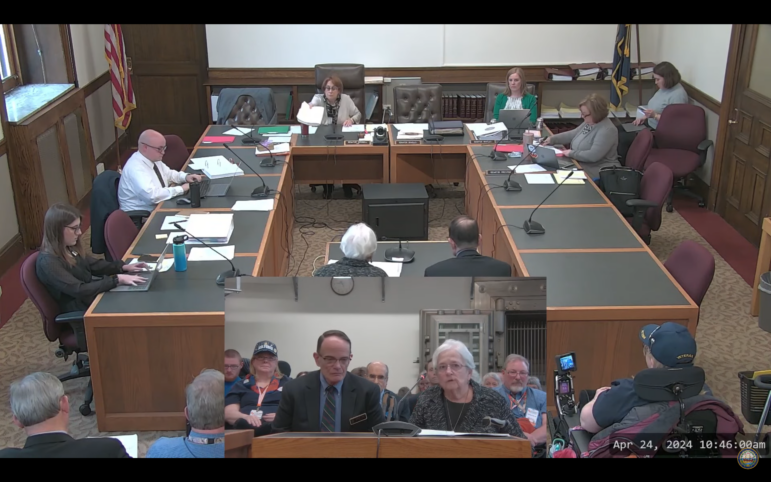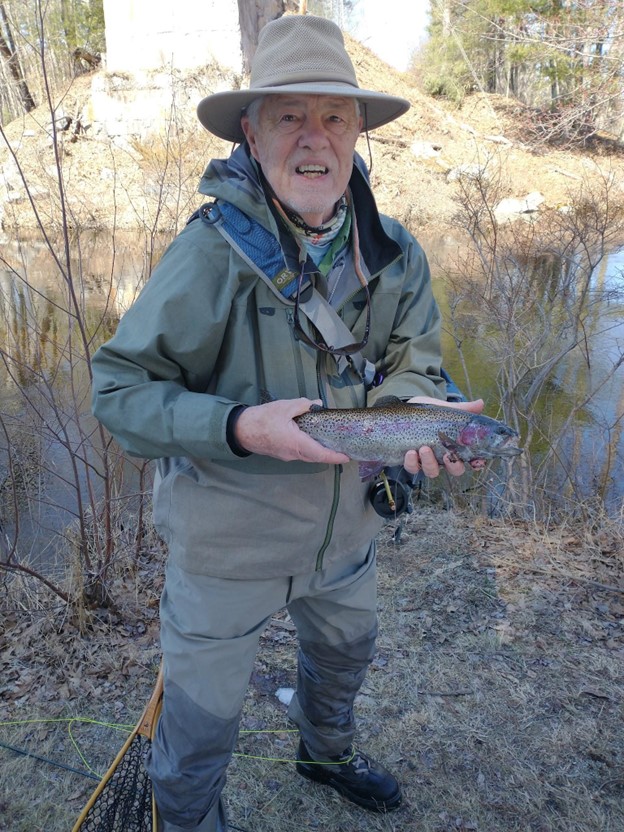Pioneers of Crowd Funding & Conservation
Editor’s Note: Enjoy this double dose of Wayne D. King as he shares his column The View From Rattlesnake Ridge and his podcast New Hampshire Secrets, Legends and Lore devoted to interviewing Jack Savage, president of the Society for the Protection of New Hampshire Forests
The View From Rattlesnake Ridge
Ruminations from an Unabashed Optimist, an Environmental Patriot and a Radical Centrist
By WAYNE D. KING
Celebrating the Society for the Protection of NH Forests – A Conversation with Jack Savage
A joint production of New Hampshire Secrets, Legends & Lore Podcast and The Radical Centrist Podcast.
I’ve been wanting to chat with Jack Savage, President of the Society for the Protection of New Hampshire Forests and I’ve had a growing list of things I hoped to ask him about from their part in the successful fight to stop Northern Pass recently and reaching back to the founding of the Society for the Society for the Protection of New Hampshire Forests.
Embed Code: <audio controls src=”https://feeds.podetize.com/ep/sIeGQbY8_/media“></audio><br><a href=”https://www.podetize.com/” target=”_blank”>Powered by Podetize</a>
Click arrow below for Wayne D. King’s interview with Jack Savage—
The Society for the Protection of NH Forests has pioneered conservation innovations since their founding in 1901.
Including A Column and Podcast Conversation with Jack Savage, President SPNHF
By WAYNE D. KING, The View from Rattlesnake Ridge
I stood today on the summit of Welch Mountain and looked into the Sandwich Range accessed largely along the “Road Through Sandwich Notch” of which Elizabeth Yates wrote more than a century ago although she is best known for her book “Amos Fortune-Free Man.”
At one time the town of Sandwich, to which the Notch Road is now the backcountry gateway, was a provincial capital of New Hampshire. All along this road are the stone walls, cellar holes, and other signs of a day when the population of Sandwich was considerably larger.
The Notch Road into Sandwich is a beautiful backroad trip today, passing by Beede Falls, Cow Cave and Pulpit Rock where in the 1700s and 1800s townsfolk would gather at the base of this huge Glacial Boulder and listen to the local preacher as he stood atop the rock delivering his sermon.
Sandwich Notch might have been developed over the years except for the good works of a number of local folks and the Society for the Protection of New Hampshire Forests.
Yet Sandwich Notch is only one of the Notches that the Society for the Protection of New Hampshire Forests has saved through the good works and generosity of thousands of members and friends.
You may already know of their good works. but did you know that they led the way to making crowdfunding a “thing”?
Now it can be argued that “crowdfunding” is nothing new.
My Iroquois ancestors gathered together to help one another build their longhouses even before the Peacemaker and Hiawatha brought the Great Law to them more than 500 years ago.
Early European settlers joined with one another to build barns or homes. However, there is no question that among the earliest efforts by nonprofit groups was the effort in the 1920s to save Franconia Notch through – among other things – the sale of “deeds” to a square foot of the Notch or the “purchase” of a tree, allowing thousands of people from across the nation to get involved with conservation efforts.
In just 120 years the Society has been at the forefront of change that has rippled out from the social and political boundaries of New Hampshire to the nation. Their founding effort to help pass the Weeks Act not only resulted in the White Mountain National Forest but spread the National Forest idea across the continent.
There are very few organizations with which I share such a common kinship. So many of their efforts, focused on the lands and the people to whom I am closest, have become touchstones in my own life.
The rallying point of their formation – the fight to save the forests of the White Mountains, and to protect the water resources, eventually led to passage of the Weeks Act and the establishment of the National Forest in Congress. Their opposition to building a four-lane super-highway through Franconia Notch resulted in the only scenic parkway of the Interstate highway system. The protection of Crawford Notch, Sandwich Notch, Lost River and the prevention of a ridgeline drive across the Presidential Range too were achieved with their leadership.
These epic battles were among the tales I would tell as I guided trail clearing, hiking and backpacking trips in the Whites in my early adult life. Even earlier they were the topics of dinner conversations around the family table at my home as a young boy.
Listening to my grandmother describe how she felt when she donated a hard-earned $10 to buy one square foot of talus slope on the side of Cannon Mountain to protect Franconia Notch made me feel that I was part of a grand tradition here. I watched with admiration as my Mom and Dad helped lead the efforts to clean up the Pemigewasset River with other remarkable people like Pat and Tom Schlesinger of New Hampton, Syd and Olivia Howe of Holderness, Dr. Larry Spencer at Plymouth State.
Later in my own home, around that same family table, my Senate office team would strategize ways to carry on that tradition: rebuilding the historic Smith Covered Bridge after it was burned by an arsonist, sponsoring the NH River’s Protection Act, the Land Conservation and Investment Program, and conserving Livermore Falls.
The Forest Society served as inspiration for all of this, over the years developing a conservation ethic part John Muir – the preservationist – and part Gifford Pinchot – the architect of “wise use.”
To some, it appeared that they were taking the safer, more moderate route to their destination.
No one ever accused the Forest Society of being wild-eyed environmentalists; but to the great grandson of an Iroquois man and an Abenaki woman it seemed (and still seems) right . . . a part of the Circle; where people are neither beneath or above but an integral part of the whole.
When you venture out this summer – especially if you do so here in New Hampshire – say a quiet thanks to the generations of people who have helped to build the Society for the Protection of New Hampshire Forests. Because of them the White Mountain National Forest, Franconia Notch, Crawford Notch, Sandwich Notch and other sacred places of these white hills will forever be wild and free.
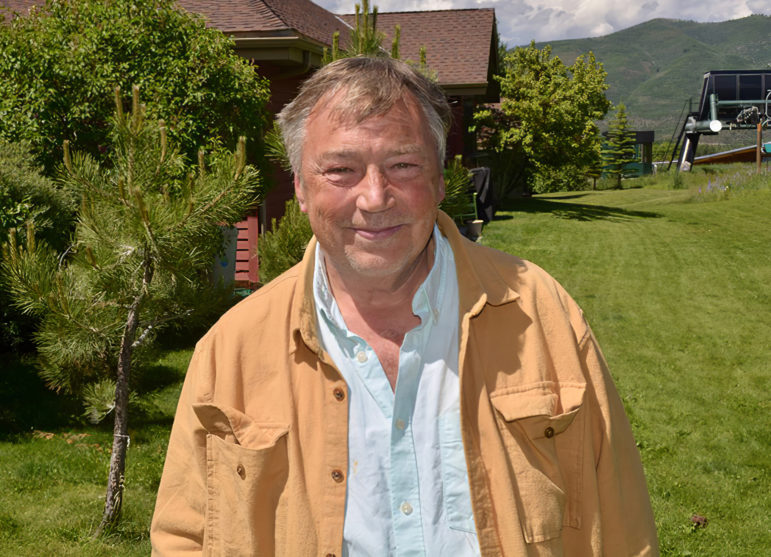
About Wayne D. King: Wayne King is an author, artist, activist and recovering politician. A three-term State Senator, 1994 Democratic nominee for Governor; he is the former publisher of Heart of New Hampshire Magazine and CEO of MOP Environmental Solutions Inc., and now a columnist for the New Hampshire Center for Public Interest Journalism (inDepthNH.org) where he writes “The View from Rattlesnake Ridge” and hosts two Podcasts: The Radical Centrist (www.theradicalcentrist.us) and NH Secrets, Legends and Lore (www.nhsecrets.blogspot.com). His art (www.waynedking.com) is exhibited nationally in galleries and he has published three books of his images and a novel “Sacred Trust” a vicarious, high voltage adventure to stop a private powerline – all available on Amazon.com. His art website is: www.waynedking.com , and his writing site: http://bit.ly/WayneDKing . He now lives in Thornton, New Hampshire at the base of Welch Mountain where he proudly flies both the American and Iroquois Flags.
